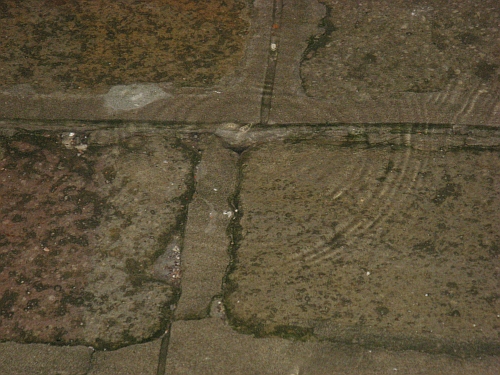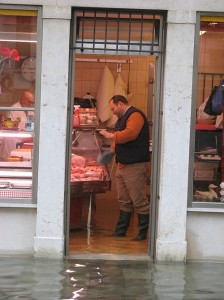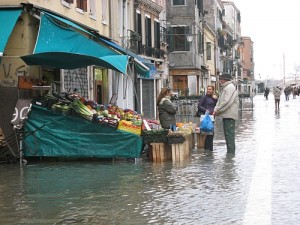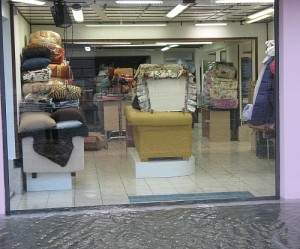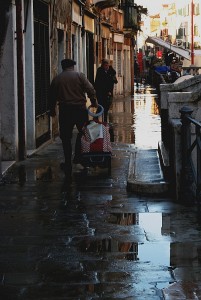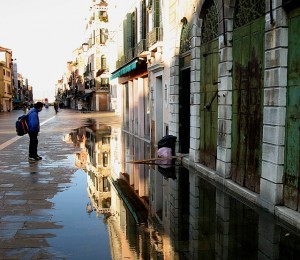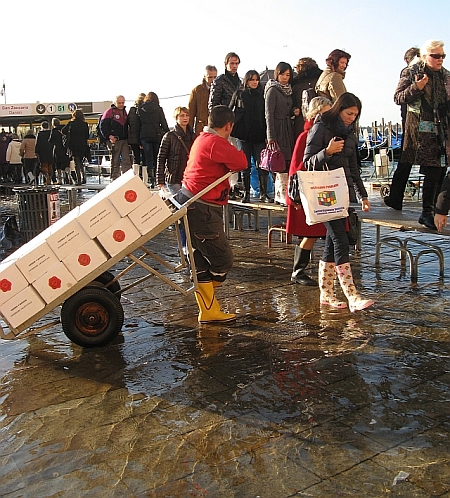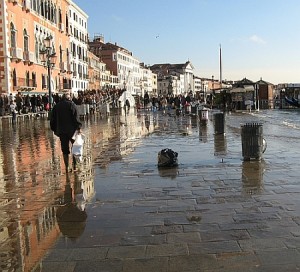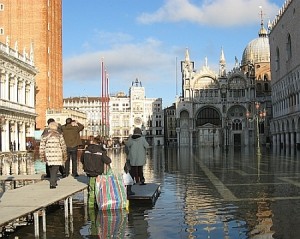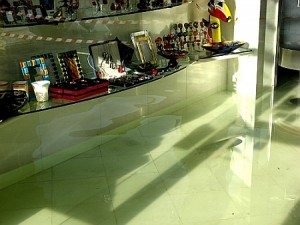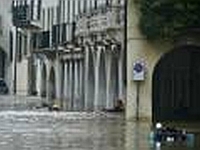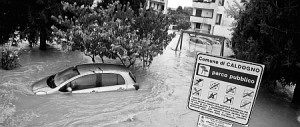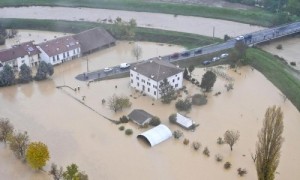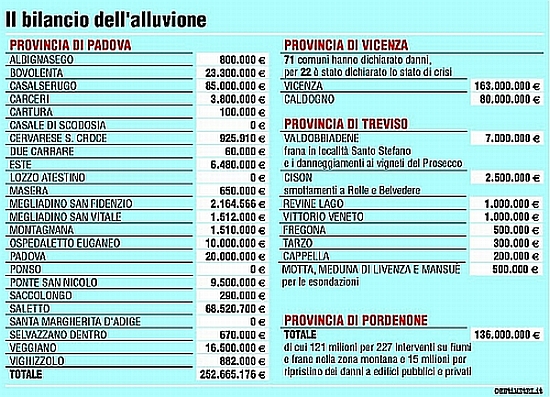Water is such an fundamental part of Venice’s fascination that it would be silly to imagine the city without it.
But if you want to discover something equally beautiful, you should look at the water without the city. Go out into the lagoon, preferably in a small boat with oars, and above all, do it in the winter.

Habit, if not logic, induces us to believe that a great day out on the water requires sunshine, heat, cold beer, and all the other appurtenances of a summer weekend. Or month.
But I have a Venetian friend — and I know he’s not alone — who, when the spring warmth begins to creep across his shoulders, shrugs and says resignedly, “Well, it’s the end of the beautiful season.”
The first time he said it, I thought he might be unbalanced. Now I say it too.
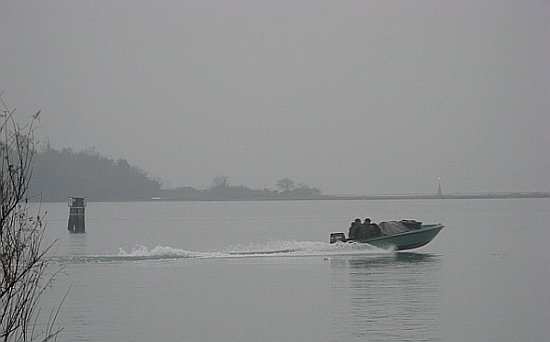
Of course there are positive aspects to summer here. But when summer brings sun to the lagoon it also brings the sun’s entourage, which is everybody in the entire universe in loud boats with loud families, rampaging around, creating waves, havoc, and confusion. The waves in themselves belong to a particular species of confusion — aggressive, chaotic, senseless. You know how, if you drop a potato chip on the ground, in two minutes ants are swarming all over it? The lagoon in the summer is that potato chip to uncounted thousands of people, almost all of whom look alarmingly alike.
But as October blends into November, and into early December, as winter breathes itself into the year and we wake up to a world wrapped in filmy fog, the lagoon changes, or rather reverts, to its true self, an intricate, delicate, harmonious realm.
![IMG_3549 What we discovered amid the debris ashore was this treasure, a "cheba da go" [KEH-ba da GO] which had gone adrift. "Go" is the Venetian name of a type of lagoon fish technically named a goby, and this piece of equipment is still, well, ready to go. Finders keepers.](https://iamnotmakingthisup.net/wp-content/uploads/2010/12/IMG_35491-300x225.jpg)
When we go rowing in the fog, everything is beautiful — the sharp air, the little melody of the water passing under the boat (which thanks to the absence of motorboats one can actually hear), and the silence itself. It’s a soft sort of silence, that floats on swathes of water that are perfectly flat yet crinkled with myriad tiny waves which the imperceptible breeze has created and is now trying to smooth out again.

We took the boat a few days ago on one of those perfect days: chilly, nebulous, with almost nobody in sight. We were aided in this solitude not only by the weather, but by the fact that it was a national holiday (the feast of the Immaculate Conception of the Blessed Virgin Mary, for the record), which meant that people weren’t working, which cut down drastically on the traffic. Just to see so much empty space was like getting a present in the mail.
Before long, real winter will arrive, bringing frost, ice, snow, scimitar winds slashing down from Siberia (I did not make that up). One year we went rowing on the day after Christmas (also a holiday); it was during one of those Arctic snaps and in a few small canals a film of ice had begun to form, which my oar broke with a neat slice. Rowing back, the wind was so strong it blew the frigid spray over our mascareta, turning to ice on the bottom. It was like rowing standing on a skating rink. With each oar stroke I thought, “If I slip, I’ll never get my footing again.” Which led me to wonder how exactly we’d ever get home. These thoughts distracted me from the inconceivable coldness of the wind and the fact that it made absolutely no sense to be out there.
On those days the world is dazzling, cut by diamonds. Beautiful, sure. Anybody can see that.
But fog is insidious, seductive, gossamer, enchanting. Tranquil. Restorative.
I’m improvising here. None of these words, and not even all of them, can do this brief little season justice, but they’re the best I can manage.

